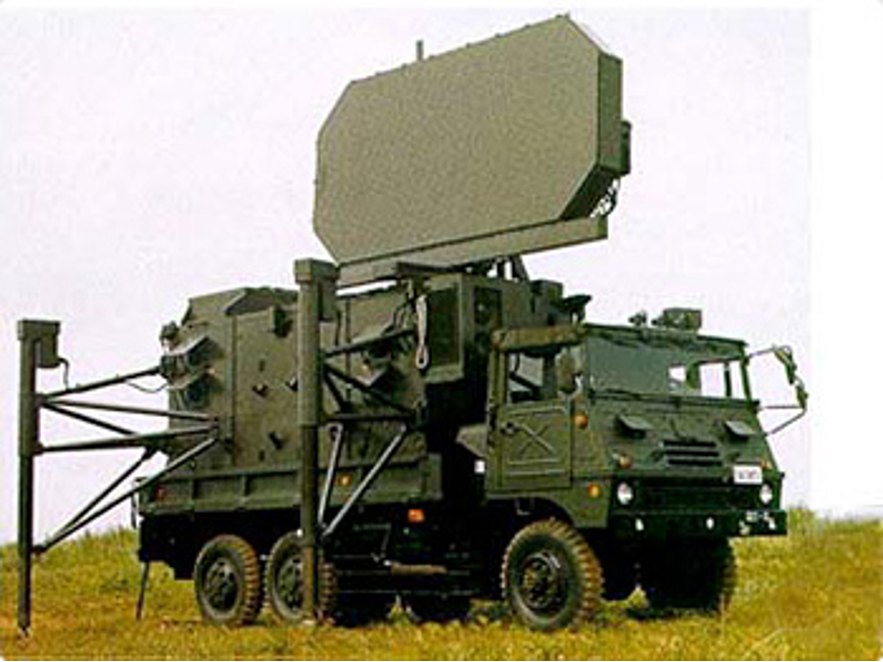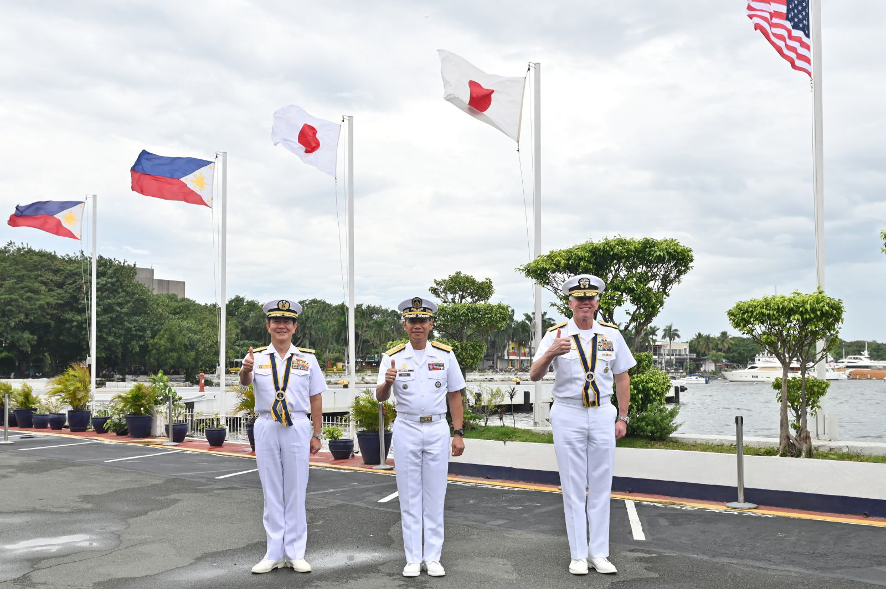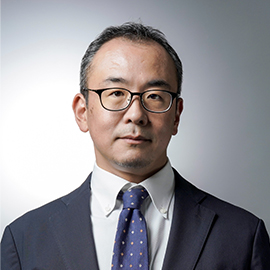In April 2023, the Japanese government established Official Security Assistance (OSA), a scheme for the grant of financial assistance to the national security authorities of other countries based on the National Security Strategy formulated at the end of 2022. OSA is a new tool of diplomacy aimed at boosting the capabilities of recipient military forces and securing regional stability through the provision of defense equipment and military infrastructure development. Its scope is limited to activities that are not directly associated with international conflicts, such as monitoring and surveillance in territorial waters and airspace, the maintenance of public order, and humanitarian and international peace activities.[1] In July, a security cooperation division was established in the Ministry of Foreign Affairs, responsible for OSA.
With others, I have advocated the need to develop a framework to enable a more strategic implementation of defense diplomacy through security assistance.[2] I have also argued for the establishment of economic cooperation through non-ODA mechanisms to address security goals, separate from ODA (Official Development Assistance).[3] From this perspective, the establishment of OSA is pleasing but leaves some outstanding issues regarding the provision of equipment. In terms of infrastructure development, there is also a dearth of debate on the utilization of this infrastructure. In this article, I will examine the issues and potential of strategic utilization of OSA.

Will OSA Fill the Gap in Japan’s Foreign Assistance Scheme? — Outstanding Issues
In this year’s Defense White Paper, (then) Minister of Defense Yasukazu Hamada pointed out that “in recent years, diplomatic efforts have also gained importance for defense.” Over the past decade, Japan has strengthened its military cooperation with like-minded countries such as Australia and partners in Europe, in addition to reinforcing its alliance with the United States.[4] Japan has also expanded its military cooperation with developing countries in Southeast Asia and elsewhere, focusing on building the capacity of their national armed forces. These efforts stem from the need to bolster Japan’s international influence in the military domain, with China’s expansionist foreign stance in mind.[5] In the context of the great power rivalry between the United States and China, Japan’s efforts at security assistance have generally been welcomed by its partner countries. At the same time, however, there had hitherto been no framework in place for Japan to provide new equipment to the defense authorities of other countries.[6] Meanwhile, the purpose of ODA is the social and economic development of partner countries: it cannot be used to pursue military aims. This was the gap in Japan’s foreign aid scheme.[7] OSA can be understood as an initiative to fill this gap.
Will OSA really solve the issue of providing equipment? Expectations are high for the success of OSA, both in Japan and overseas. I myself have received questions from foreign government officials and researchers asking whether Japan will provide advanced equipment under OSA. There is also a certain amount of anticipation from within Japan regarding the possibility of equipment exports. My answer to this question is yes, with caveats: there are still outstanding issues to be resolved. The first of these is the budget scale. A budget of 2.0 billion yen has been allocated to OSA in fiscal 2023, the first year of the initiative, and it has been reported that this budget will be increased to approximately 5.0 billion yen next fiscal year, including requested items for which no required amount has been indicated.[8] This budget is anticipated to grow past 10 billion yen in the years that follow, giving Japan’s military assistance through OSA a certain degree of presence and effectiveness. The four air surveillance radar systems procured under contract by the Philippines in 2020, for example, totaled approximately 100 million dollars (14 billion yen).[9] Given the scale of the OSA budget, equipment such as this could be provided through grants in the future.
On the other hand, to take the oft-cited example of the overseas transfer of US-2 Flying Boats by the Japan Maritime Self-Defense Force, it is believed that each US-2 costs no less than 12 billion yen. An order of several units, including some for export, may lower this cost somewhat due to the greater efficiency of mass production, but given the anticipated scale of the OSA budget, it is not realistic to expect the grant of such expensive pieces of equipment by themselves. In this context, the first task in implementing OSA is to work within its budget to build a track record of successful transfers of equipment and materials that are relatively easy to procure, such as the telecommunications equipment considered by the government for OSA projects this fiscal year or materials and machinery for capacity-building projects implemented by the Ministry of Defense bilaterally or through the United Nations (bulldozers and heavy machinery and related materials in the facilities field, for example). The insight and lessons learned from these initial efforts could be used to design larger-scale equipment transfer schemes in the future by enabling OSA to be used as a form of purchase subsidy for partner countries, considering the paid provision of equipment, or combining OSA with the use of export loans through the Japan Bank for International Cooperation (JBIC).[10]

Another issue is the formulation of equipment transfer projects and the development of a framework for doing so.[11] A broad scope of cooperation has been established for OSA, encompassing activities to ensure the rule of law (monitoring and surveillance in territorial waters and airspace, counter-terrorism, counter-piracy, etc.), humanitarian operations (disaster response, search and rescue, medical care, transport of relief goods, etc.), and international peace cooperation (capacity building to participate in peacekeeping operations, etc.). These activities, however, are subject to the application of the Three Principles on Transfer of Defense Equipment and Technology and the Implementation Guidelines thereto, and limited to cooperation within the bounds of the five types of logistics support indicated in the Implementation Guidelines (rescue, transportation, vigilance, surveillance or minesweeping).[12] To achieve the maximum results in these limited areas, Japan must not only conduct hearings to ascertain the needs of its partner countries. The process of project formulation is also crucial: the examination of strategic applications of OSA that will open up connections with the national defense authorities of its partner countries.
From the perspective of defense diplomacy, it is important to establish a robust and sustainable relationship of trust with the partner country when considering the transfer of supplies. It is also vital to bear in mind the need to consciously build relationships for the transfer of equipment and parts that can only be supplied by Japan, regular servicing in Japan, and the training of operating and maintenance personnel. In this sense, OSA differs significantly from development cooperation aimed at encouraging the partner country’s self-development. It is necessary to select and provide equipment under OSA not only on the pretext of contributing to the enhancement of the partner country’s capabilities in the relevant field or the stability of the region. It is also crucial to set forth specific policy goals such as bolstering personal connections between the officials of the two countries, promoting the formulation of future bilateral projects, and using the provision of equipment to obtain information. It will also be necessary to constantly devise ways to maximize synergies with other policy tools through measures such as operational and maintenance capacity building assistance provided by the Japan Self-Defense Forces and the post-grant support framework. Cooperation between the National Security Secretariat, the Ministry of Foreign Affairs, and the Ministry of Defense has already been incorporated into the institutional structure of OSA, but close coordination between government ministries and agencies and the systematic formulation of potential projects using multiple policy tools will be essential going forward.[13]
Toward the Formulation of Strategic OSA Infrastructure Assistance Projects — Future Possibilities
At present, the spotlight on equipment transfer somewhat overshadows another key aspect of OSA: military infrastructure assistance for partner countries. OSA enables Japan to assist partner countries in developing military-civilian dual-use airports and seaports and carrying out the repair and construction of military facilities and barracks. This assistance cannot be provided under the current ODA guidance by the Japanese government. Some of these projects would promote visits by the warships and aircraft of the Japan Self-Defense Forces or secure access points to the Indian-Pacific region. This may turn out to play an even more crucial role than equipment transfer, which is subject to various restrictions. The Philippines provides an outstanding example of this.
At the summit meeting held on February 9, 2023, between Prime Minister Kishida of Japan and President Marcos of the Philippines, the defense authorities of the two countries signed “the terms of reference (TOR) concerning the Humanitarian Assistance and Disaster Relief Activities of the Japan Self-Defense Forces (JSDF) in the Philippines.”[14] These terms of reference are designed to expedite procedures in the event of a large-scale disaster in the Philippines, or joint training and exercises in preparation for such a disaster, and are especially noteworthy because they facilitate access to the region by the Japan Self-Defense Forces.
The Marcos government has also revised its predecessor’s policy regarding the use of military bases by its ally, the United States, recommencing the development of locations available for use by the United States military through the U.S.-Philippines Enhanced Defense Cooperation Agreement (EDCA). This agreement enables the United States to proceed with the advance deployment of supplies and equipment to nine locations, including locations in the north and west of the Philippines, on the coast of the South China Sea, facilitating the patrol and monitoring of the South China Sea by the United States.[15] In addition to disaster response, this is expected to strengthen deterrent and response capabilities against China. Japan, the United States, and the Philippines have established a framework for trilateral defense cooperation, with the first high-level meeting of top security officials from the three countries taking place in June 2023. In addition to stronger cooperation through the U.S.-Philippines EDCA and the Japan-Philippines TOR, their joint declaration explicitly referred to the utilization of OSA.[16] The Japan Self-Defense Forces are also strengthening their cooperation with the Philippines military, both bilaterally and in coordination with the United States and others. The Ground Self-Defense Force’s Amphibious Rapid Deployment Brigade, in particular, has achieved constant mobility through a two-regiment structure, with the development of the 2nd Amphibious Rapid Deployment Regiment completed at the end of 2021.[17] The brigade has engaged in several joint exercises with marine corps from the United States and the Philippines, and the first high-level army talks between the three countries were held in December 2022.[18]

Japan’s next step in this direction should include the possible implementation of day-to-day information-gathering, vigilance and surveillance through the deployment of key contacts within the Philippines government and regular visits by military units, the establishment of a robust framework for Japan-U.S.-Philippines trilateral coordination on the ground, and the construction of hardware to physically enable an immediate response to events such as natural disasters. OSA should be actively utilized for these purposes. Going forward, it should be entirely possible to develop infrastructure and stockpile related equipment within the Philippines in preparation for possible disaster relief activities by the Japan Self-Defense Forces and to provide assistance to the Philippines military to supplement the development of bases under the U.S.-Philippines EDCA. Moreover, rather than consigning the development and maintainance work to a third-party contractor, one option may be for the Philippines military and the Japan Self-Defense Forces to engage in this work jointly, or for Japan to provide capacity building assistance, with the military units of the two countries working shoulder-to-shoulder to cultivate a greater sense of solidarity. In the future, it may be possible for units of the Japan Ground Self-Defense Force and others to use these facilities as patrol points for their activities.
The Philippines has seen a rapid advance in security cooperation, and I have used it here as an example to present suggestions for the utilization of OSA. However, OSA is anticipated to develop into a multi-faceted mechanism that can also be used, among other purposes, to bolster coordination with other key countries, strengthen cooperation with allies and like-minded countries, and build relationships with the national defense authorities of other countries.
In Place of a Conclusion
OSA was developed to fill a gap in Japan’s foreign aid scheme, but this brief overview has served to highlight the many areas where its strategic utilization warrants further consideration. Before long, it will be necessary to examine the possibility of equipment transfer through export finance and other paid schemes or subsidy programs. Lateral policy initiatives are also needed, including coordination with other policy tools such as the strategic utilization of ODA, capacity building assistance by the Ministry of Defense and the transfer and loan of disused equipment (complete units and parts from used equipment). The newly-established security cooperation division should be quickly bolstered and members from the upper echelons of the Japan Self-Defense Forces should be appointed as its head and senior planning personnel.
Moreover, while the spotlight is presently focused on equipment transfer, OSA infrastructure assistance can also be utilized to achieve multiple strategic goals, such as enhancing the capabilities of partner countries, strengthening relationships, ensuring access to the region, and supplementing activities by the United States military. Through the parallel utilization of strategic communications, OSA can be used to contribute directly to bolstering and securing the framework of deterrence in the South China Sea, and its future development demands continued attention.
(2023/11/08)
translated from the original version in Japanese.
*On November 3rd, during the visit of Prime Minister Fumio Kishida, the Governments of Japan and the Philippines have made the official Exchange of Notes to grant 600 million yen to the Philippines government for the purchase of coastal radar systems to be used by the Philippines Navy. They have also started to consult on the Reciprocal Access Agreement (RAA) to facilitate exchange of two militaries[19].
Notes
- 1 The outline of OSA and projects for fiscal 2023 have been reported in the news media, mostly as presented in announcements by the Ministry of Foreign Affairs at the time of writing, and I will not repeat them here. Ministry of Foreign Affairs “Official Security Assistance (OSA),” July 4, 2023 (Japanese version: April 5, 2023).
The following article clarifies the differences between OSA and other assistance frameworks such as ODA. Takumi Suzuki, “What is Official Security Assistance (OSA)? Seeking the Potential for Collaboration in Strategic Diplomatic Assistance,” Mitsubishi Research Institute, July 28, 2023 (Japanese only). - 2 Security Studies Program, Sasakawa Peace Foundation, “Strengthening Japan’s Defense Diplomacy,” March 2022 (Japanese version: October 2021)
- 3 Ippeita Nishida, “Revising the Development Cooperation Charter: Issues in Linking ODA and Security,” International Information Network Analysis (IINA), August 10, 2022 (Japanese version: June 27, 2022)
- 4 Yasukazu Hamada, “On the Publication of Defense of Japan 2023,” Defense of Japan 2023, Ministry of Defense, July 2023.
- 5 With others, I perceive this in terms of the concept of “defense diplomacy.” Tsuneo Watanabe and Ippeita Nishida, What is Defense Diplomacy? Keiso Shobo, 2019.
- 6 In addition to loaning equipment (for example, the loan of Maritime Self-Defense Force TC90 training aircraft to the Philippines in March 2017), Japan became able to donate used equipment and surplus supplies to other countries under the revisions to Japan’s Self-Defense Forces Law (Article 116-3 of which sets forth an exception to the Public Finance Act regarding the transfer of unused equipment to governments in developing regions). However, these did not cover the grant of new equipment or transfer through government loans.
- 7 Ippeita Nishida, “Revising the Development Cooperation Charter: Issues in Linking ODA and Security,” International Information Network Analysis (IINA), August 10, 2022 (Japanese version: June 27, 2022)
- 8 Anri Takahashi, “Military Assistance to ‘Like-minded Countries’ Aimed at Deterring China: Assistance to Six Countries Possible Next Fiscal Year, Budget Set to Double,” Asahi Shimbun, August 28, 2023.
An actual summary of budget estimates can be found below. Ministry of Foreign Affairs, “FY2024 Expenditure Request Form,” August 31, 2023. - 9 Ministry of Defense, “(Notice) Transfer of Air Surveillance Radar Systems to the Philippines,” August 28, 2020.
- 10 The following answer by Minister of Defense Yasukazu Hamada to a question in the National Security Committee suggests that the government is considering the possibility of loaning or granting new equipment. Yasukazu Hamada, minutes of the House of Representatives National Security Committee (211th Plenary Session of the Diet), April 27, 2023 (Japanese only).
“The US2 has garnered praise internationally for its effectiveness, and I think that there would be a degree of public understanding for any efforts to lend or provide it free of charge, for example. I think we should consider which method is most beneficial and effective, and push ahead with it.” - 11 Issues such as the transfer of equipment with lethal capabilities and the transfer of jointly developed equipment to a third country are beyond the scope of this paper, as they are still the subject of debate between the ruling parties at the time of writing.
- 12 Regarding these types of support, the government is currently engaged in internal discussions concerning the possibility of additional mine-clearing, education and training.
“Additional Mine-clearing, Education and Training under Consideration: the Government Discusses Expanding Defense Equipment Exports and Revising Implementation Guidelines,” JIJI.COM, June 19, 2023. - 13 In this context, some countries have adopted comprehensive policy guidelines and centralized frameworks. For example, in the United Kingdom, defense involvement is implemented through a whole-of-government approach, coordinating different government ministries and agencies under government-wide foreign policy guidelines. In France, the approximately 400 members of the Security and Defence Cooperation Directorate (DCSD) include officials from the Ministry for Europe and Foreign Affairs, the military forces, the National Gendarmerie, police, and public sector experts, among others, under the leadership of a senior officer dispatched from the Ministry of Armed Forces. Under its Defence Cooperation Program (DCP), Australia engages in exchange, training, exercises, and the provision of assets with the military forces of its allies. In China, President Xi Jinping has reformed the armed forces, establishing the Office for International Military Cooperation directly under the Central Military Commission and promoting “military diplomacy.” These examples are taken from What is Defense Diplomacy? above.
- 14 Ministry of Foreign Affairs of Japan, “Japan-Philippines Summit Meeting,” February 9, 2023.
- 15 Karen Lema, “Philippines reveals locations of 4 new strategic sites for U.S. military pact,” April 3, 2023.
- 16 White House, “Joint Readout of Trilateral Meeting Between the National Security Advisors of the United States, Japan, and the Philippines,” June 16, 2023; Jesse Johnson, “U.S. and Philippine leaders look to craft closer trilateral security ties with Japan,” The Japan Times, May 1, 2023; Mari Yamaguchi, “US, Japan, Philippines Agree to Strengthen Security Ties Amid Tensions Over China, North Korea,” Associated Press, June 16, 2023.
- 17 From my interviews with officials at the ceremony held to mark the 5th anniversary of the Amphibious Rapid Deployment Brigade (on April 15, 2023 at the Ground Self-Defense Force’s Camp Ainoura).
- 18 Ministry of Defense, “1st Japan-U.S.-Philippines High-level Army Talks,” December 11, 2022.
- 19 Ministry of Foreign Affairs, “Prime Minister KISHIDA Fumio's Visit to the Philippines (November 3),” November 3, 2023.

